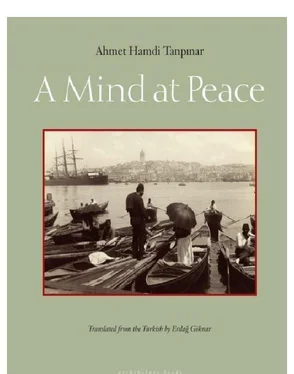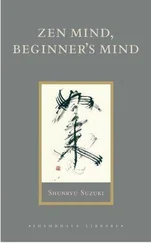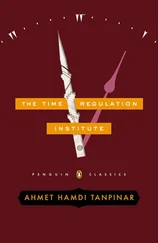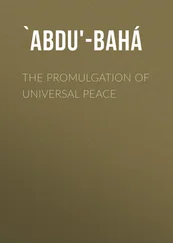Reclining in the armchair between the table and the window, she smoked a cigarette and drank her demitasse.
The moment of Nuran’s departure, like the hours that passed in her absence, belonged to Neşâtî, another seventeenth-century poet. Nuran repeated the couplet with Mümtaz:
And you even left my soul full of yearning Nor could I bear the company of friends without you
Nuran’s amorousness represented a faith of sorts for Mümtaz. He was its sole devotee, a high priest waiting before the most sacred spot in the temple and keeping the hearth forever lit, the one chosen from among mortals by the goddess so that her mysteries might find substantiation. This comparison contained a measure of truth. The sun rose each day and the entirety of the past replayed its epochs as if for their sake alone.
Some mornings they trysted in Kanlıca at the Bosphorus residence of Nuran’s relative. Watching Nuran on the quay in her white bathing suit — though only as a friend, due to others in the vicinity — represented an initiation into new tastes and torments. When he couldn’t quite approach her, or if she didn’t remind him at whiles of their intimacy, in his thoughts she’d become an unattainable promised land, a cruel goddess of unfathomable mysteries whose choice of him as mortal prophet hung in the balance; Nuran, a presence harboring the riddle of all potentialities and that of death and birth in her womb, became mistress of seasons, of every creature who plodded in her wake like a compliant slave or a captive beast of burden.
Anxiety fueled the deepest mechanisms in Mümtaz’s soul. He would later realize that succumbing in excess to his imagination played a primary role among factors poisoning his contentment.
Over the duration of the summer, however, Mümtaz believed the human soul to be freer than it was — convinced that one could take control of oneself in a trice; that is to say, he was one of life’s motley fools.
On days Nuran didn’t come to Emirgân, the couple met either at the ferry landing or at Kanlıca, wandered the Bosphorus by caïque, went to beaches, and at times forayed as far as the heights of Çamlıca. Mümtaz always returned from these ventures sated. Continuing the custom begun on their first night, they came up with various monikers for places they admired. The coffeehouse in Çamlıca’s interior was derûn-i dil , their “Heart of Hearts,” because in that setting Mümtaz had listened to Nuran sing, in the Beyatî makam , Tab’î Mustafa Efendi’s offbeat Aksak Semâi: the song that began, “Your endearments, my companion, will not abandon the heart of hearts,” and contained reminiscences that transcended death. In that summer midafternoon among the buzz of insects, the occasional flutter of wings, and the shouts of bored, idle urchins, the panorama, having withdrawn into its beauty as if unsure of what else to do — with its small, sloping hillocks, its gardens on either side rolling down to the sea, its orchards, old manors, and copses whose dusty jade had been brushed on by cypresses amid deep naphtha green, the infinite empyrean overarching all — shrugged off its slumber, ceded itself to the laments of Tab’î Mustafa Efendi resonating through Nuran’s voice, and fused to the skin of lover and beloved. Mümtaz listened often to the piece afterward, never abstracting it from these hours spent with Nuran at the coffeehouse located above the cistern and fountain, remnants of Sultan Mehmet IV’s seventeenth-century hunting lodge.
Another night, returning to Kandilli from Çengelköy, they’d named the otherworldly shadow cast onto the Bosphorus surface currents by the trees before the Kuleli Military Academy the “Nühüft song.” This was such a realm of inner radiance that its faithful representation could be found only in the dark emerald mirror of the Nühüft, reflecting spectacularly sparkling stirrings of a reclusive countenance.
By and by, they gave names to locales of their choosing along the Bosphorus, as the Istanbul landscape of their imagination merged with traditional Ottoman music, and a cartography of voice and vision steadily proliferated.
As Mümtaz slowly gathered around Nuran the things he admired and longed for, he found himself more in command of their powers. Like great novelists of the age, he began to feel that he was truly living only when he relied upon his woman. Before, he’d read widely and had weighed and considered matters; but now he understood that these things had become part of his life with more vitality; through his love for Nuran, they’d now entered into a living and breathing realm. She effectively became a cluster of light between that which rested in his thoughts and that which existed in his surroundings, illuminating everything such that the most disparate elements became part of a synthetic whole.
Ottoman music was one of these elements. After he’d met Nuran, this art form had in effect thrust open its doors. In music, he found one of the purest and most rejuvenating wellsprings of the human soul.
One day they roamed together through Üsküdar on Istanbul’s Asian shore. First, to avoid waiting for the ferry at the landing, they visited Sinan’s mid-sixteenth-century mosque of Mihrimah Sultana, daughter of Sultan Süleyman the Magnificent and the storied Roxelana. Then they went into the early eighteenth-century Valide-i Cedid Mosque of Emetullah Gülnüş Sultana, the queen mother of Ahmet III.
Nuran quite admired the türbe mausoleum and the mosque, whose decor resembled the inside of a petite fruit. They’d long missed the ferry. So by taxi they went to Sinan’s sixteenth-century Valide-i Atik Mosque, built in honor of Nurbanu Sultana, queen mother of Murad III, and from there to the seventeenth-century Çinili Mosque of Kösem Sultana, queen mother of Murad IV.
By coincidence, these four great mosques of Üsküdar had been dedicated to love and beauty, or at the very least to a maternal sensibility.
“Mümtaz, in Üsküdar a genuine Sultanate of Women reigns…”
On the following day, again in Üsküdar, they visited the fifteenth-century Rumi Mehmet Pasha Mosque and the eighteenth-century Ayazma Mosque, and wandered the Şemsipaşa district on foot. Only days later they walked aimlessly beneath scorching sunlight around the area of the Selimiye Barracks, first built in 1800 to house the reformed Nizam-i Cedid army of Sultan Selim III. A confounding nostalgia for the past seized him as he saw the first geometric boulevards made in Istanbul and the handsome streets with window-on-the-past names that conjured a genuine feast of an Istanbul evening.
“Istanbul, Islambol,” he repeated. “If we don’t truly know Istanbul, we can never hope to find ourselves.” In his soul, he’d now become brethren to destitute masses and houses verging on collapse. He wandered feverishly through the Sültantepe neighborhood. But the place he most loved was the Küçük Valide Mosque, located in the market square, though he wasn’t partial to the tomb.
“If I had my druthers, I wouldn’t be buried here. It’s too out in the open,” she said.
“After death, what does it matter?”
“I don’t know, even after dying, this much in the midst of everything. Anyway, death can’t be felt…”
“But when the mosque was opened, the markets had been closed down so no one would see the arrival of the Valide Sultana and her entourage.”
Nuran especially admired the mosque and its interior half-light at eventide. She loved the eaves embellished with kilim motifs amid marble and gilt ornamentation.
As they returned from these excursions, she pressured him about his unfinished novel on Shaykh Galip. This historical novel, set during the turn of the eighteenth-century era of Selim III, contained elements of Mümtaz’s own life. With Nuran in mind, Mümtaz had sketched the characters of Selim III’s half-sister, Hatice Sultana, and his younger sister, Beyhan Sultana. Now, as the young lady read the descriptions in the drafts, she became rather meticulous, as if selecting a pattern at the seamstress’s or organza at a fabric shop.
Читать дальше





![Джон Харгрейв - Mind Hacking [How to Change Your Mind for Good in 21 Days]](/books/404192/dzhon-hargrejv-mind-hacking-how-to-change-your-min-thumb.webp)






